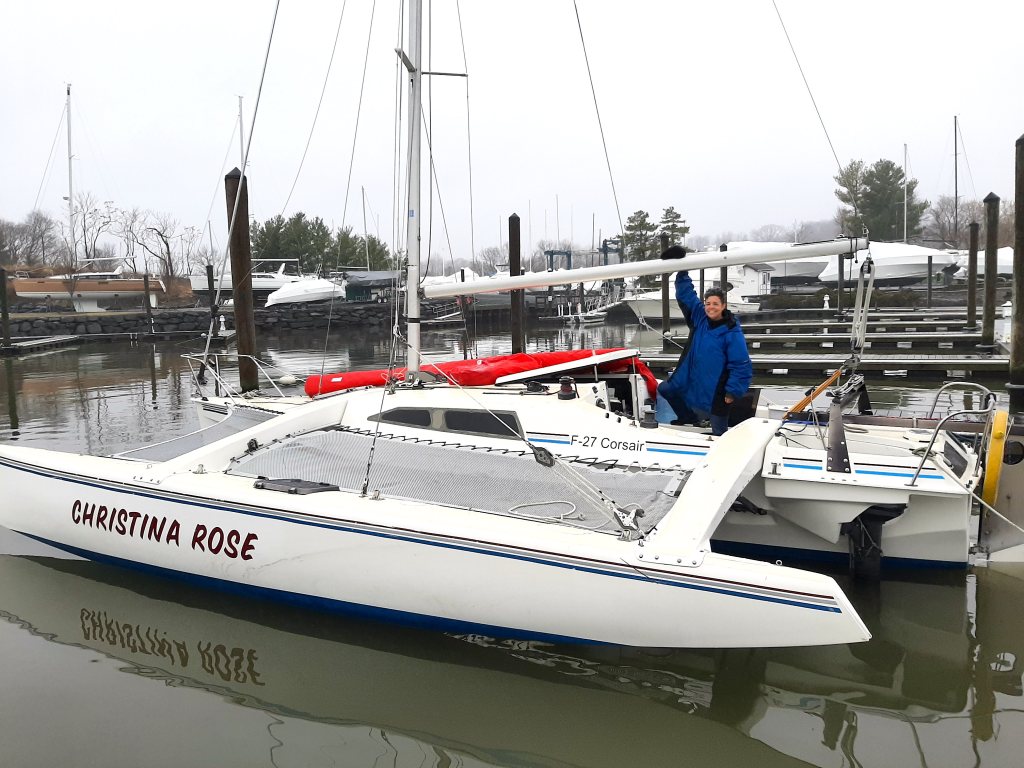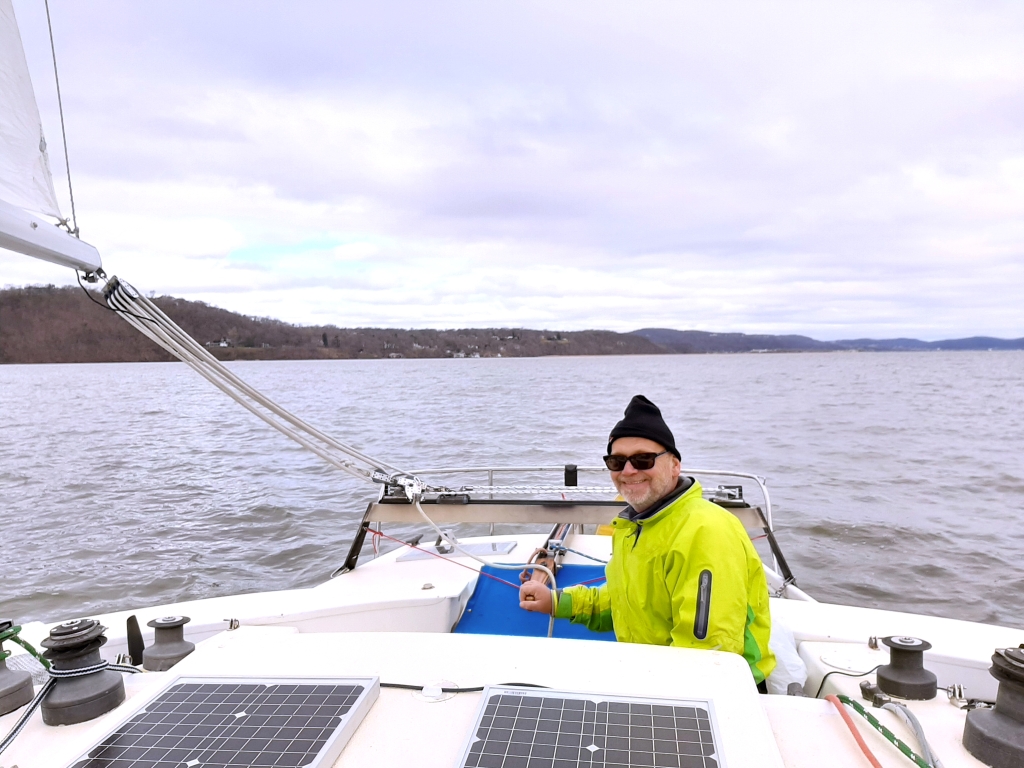“We could shelter at sea.”
The idea sounded crazy. Launch a sailboat from New York City, head south, and live aboard it for an unknown amount of time?
But then, the world had gone crazy.
It was March 15, 2020. Vov and I had just completed the Everglades Challenge, his 7th (or 8th, we aren’t quite sure), my second. We were driving up from Key Largo, Florida to New York, catching up on the news.
We’d been out of contact with the outside world for over a week. Things seemed to have taken a dramatic turn for the worse: Apparently New York City was on the verge of being shut down due to the pandemic.
What did that even mean, “shut down”?
Would they close the bridges and tunnels? The downside to living on an island is that during a crisis, you can be trapped. I remembered what happened on 9/11, and fought back a rising sense of claustrophobia.
Over the 20-hour drive, we obsessively scanned the news and discussed our options.
We could shelter in my apartment, the larger of the two. We’d be reasonably comfortable.
But my apartment is just a few blocks from what was shaping up to be Ground Zero for the pandemic: Mt. Sinai hospital.
If this disease were as contagious as reported, we’d have an increased chance of catching it in the narrow aisles of the grocery store, in the apartment lobby, in the elevator…
There was always Vov’s apartment in Nyack. That felt safer, and it was just a block away from the Hudson River.
But it was a one-room efficiency; no way could I manage to work there if we were both staying there.
As we ticked off the miles on I-95, the idea of sheltering at sea made more sense. Particularly if, as Vov feared, the pandemic were merely a harbinger of total societal collapse.
I didn’t think that would happen, but I couldn’t say it wouldn’t. And even if it didn’t, things could get pretty grim. I’d read John Barry’s account of the 1918 flu. At least on board a sailboat, we could leave the country if things got really bad.
More realistically, we could head south, out of the early-spring gloom. Although we didn’t know much about this virus, it’s true that ultraviolet rays are generally anti-viral and anti-microbial. And even though the phrase “social distancing” was just emerging, it’s safer to be miles away from your neighbors than breathing the same air.
Still. Living on board a sailboat? For an extended, indefinite period of time? Vov had spent over a decade living on a sailboat, so the idea made sense to him. But me? Despite the fact that I’d spent the past five days as crew on an inflatable catamaran, I didn’t even begin to know how to sail. Could I work? What about Mully, the cat that found me?
We talked through the details. Mully could live on the boat with us. We could bring the kayaks, both for recreation and as dinghies to get from the anchored boat to land. We’d get solar panels, and batteries, so I could work. We’d stay near the coastline, so we’d be within range of cellular Internet services.
As the miles ticked away, the idea of sheltering at sea began to make more and more sense.
The only question was which sailboat.
Vov had a sailboat, but it was in dry dock. It needed repairs to be fully seaworthy, and with a pandemic closing everything down, getting the equipment (not to mention launching the boat) seemed risky. We could afford a used sailboat, and Vov had the model in mind: an F-27 Corsair trimaran. The wings would provide stability for me to work (trimarans don’t heel the way monohulls do), plus extra living and storage space.
But could we buy and outfit a boat fast enough?
As I drove, Vov researched. We found five boats that might work: Two in Florida (now hundreds of miles behind us, and receding rapidly). One in Ohio. And two in Massachusetts. Ohio, like Florida, seemed too far away.
Vov made inquiries about the Massachusetts boats.
We arrived in NY late Sunday morning. By Monday afternoon we’d picked Mully up from the vet where I’d boarded him. We made a hurried sweep through the apartment and grabbed what I thought we might use.
Then we headed for Nyack: Mully, gear, and all.
Less than a week later, on Saturday March 21, we were in the yard of a friendly man named Dave, in Massachusets. We met his price for the Corsair, Christina Rose. He said we could pick it up as soon as the check cleared. We drove back to Nyack and began stocking up frantically.
Three days later, Vov drove to Massachusetts, put a fast coat of bottom paint on the boat, and drove back down to Nyack.
Meanwhile, I made a final visit to the NYC apartment and picked up anything I thought we could use. Before I locked the apartment up I took a long look around. When would I see it again?
No time to wonder. Curfew would start that evening, and the rumor was that the marinas would be shut down, too. We’d pulled the two kayaks out of John F. Kennedy Marina where we kept them, just hours before the authorities closed it.
But the private marina where we were keeping Christina Rose was beginning to push back. We needed to launch, and fast.
We got her into the water on March 27. We worked frantically finish stocking it, peripherally becoming aware of the illogical grocery store shortages: Water was rationed. Toilet paper was nowhere to be had (fortunately Vov had a supply of marine toilet paper.) Hand sanitizer was gone, but rubbing alcohol was plentiful (so we stocked up.) We also bought plenty of on canned vegetables and fish, along with rice and pasta. We’d bought a supply of freeze-dried food on the way north from Florida, so we had that.
By April 1 we were ready to launch. It was a cold, gloomy afternoon. With some trepidation, we motored out of the marina. Once out on the Hudson, Vov raised the sail. We were en route!
Who is “Vov”? How did I come to be completing another Everglades Challenge, this time on a sailboat? And how did we fare sheltering at sea?
Stay tuned…





